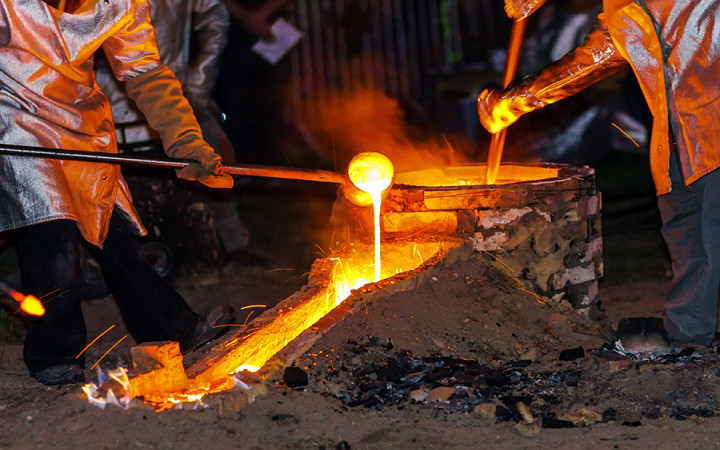Today’s Wonder of the Day was inspired by Laney. Laney Wonders, “Where Does Metal Come From?” Thanks for WONDERing with us, Laney!
Do you ever take time to stop and reflect on the world around you? Wherever you happen to be right now, stop reading for a minute and simply look all around you. What do you see?
All the "stuff" around you is made of something. What is it? Have you ever given much thought to the wide variety of materials that make up everything that's around you? Are there carpet fibers under your feet? How about pieces of wood or plastic forming the seat you're sitting on?
There's another building material that's very common throughout the world. You find it in the pots and pans you cook with. It makes up most of the appliances in your home. It's in the vehicles you ride. It supports the bridges you drive across. It even helps to hold up buildings, like your home and school. What are we talking about? None other than steel!
Where does all that steel come from? It certainly doesn't grow on trees! Steel is a metal, and metals usually come from under the ground. If you look on the periodic table of elements, though, you won't find steel listed there as an element.
You will, however, find the element that's the primary component of steel: iron. Iron does come from underground. Iron is mined in many places around the world. So how does that iron become steel?
Steel is an alloy, which is a mixture of two or more elements. Metals are divided into two different types: ferrous and non-ferrous. Ferrous metals contain iron. Steel is an example of a ferrous metal. Non-ferrous metals include aluminum, copper, and titanium.
By itself, iron ore usually has many impurities, such as silica, phosphorus, and sulfur. These impurities weaken iron. The process of making steel involves removing the impurities from iron and adding carbon to give steel its incredible strength.
Metal can be extracted from ore by heating it to extremely high temperatures until it melts. This process is known as smelting. Historians believe steel has been produced in rudimentary furnaces for thousands of years.
The invention of blast furnaces and other technological improvements in the 17th through 19th centuries led to higher quality steel that could be mass-produced. Today, most steel plants use a production process called basic oxygen steelmaking (BOS).
In large BOS furnaces, high-purity oxygen is blown through molten iron ore. The oxygen combines with impurities to form oxides that either burn off or form a by-product, called slag, which can be skimmed off the surface of the molten iron. Other chemical cleaners, called fluxes, are also added to remove impurities.
Other elements can then be added to create the exact type of steel desired. Carbon is the most common additive. It's used to create high-strength carbon steel. Another popular additive is chromium, which can be added to make stainless steel that's very resistant to rust.
Steel is one of the most common building materials in the world, because of its high strength and relatively low cost to produce. Each year, steel plants produce more than 1.3 billion tons of steel that gets used in various ways, such as building materials, ships, automobile frames, bridges, appliances, weapons, and machines.





